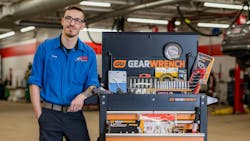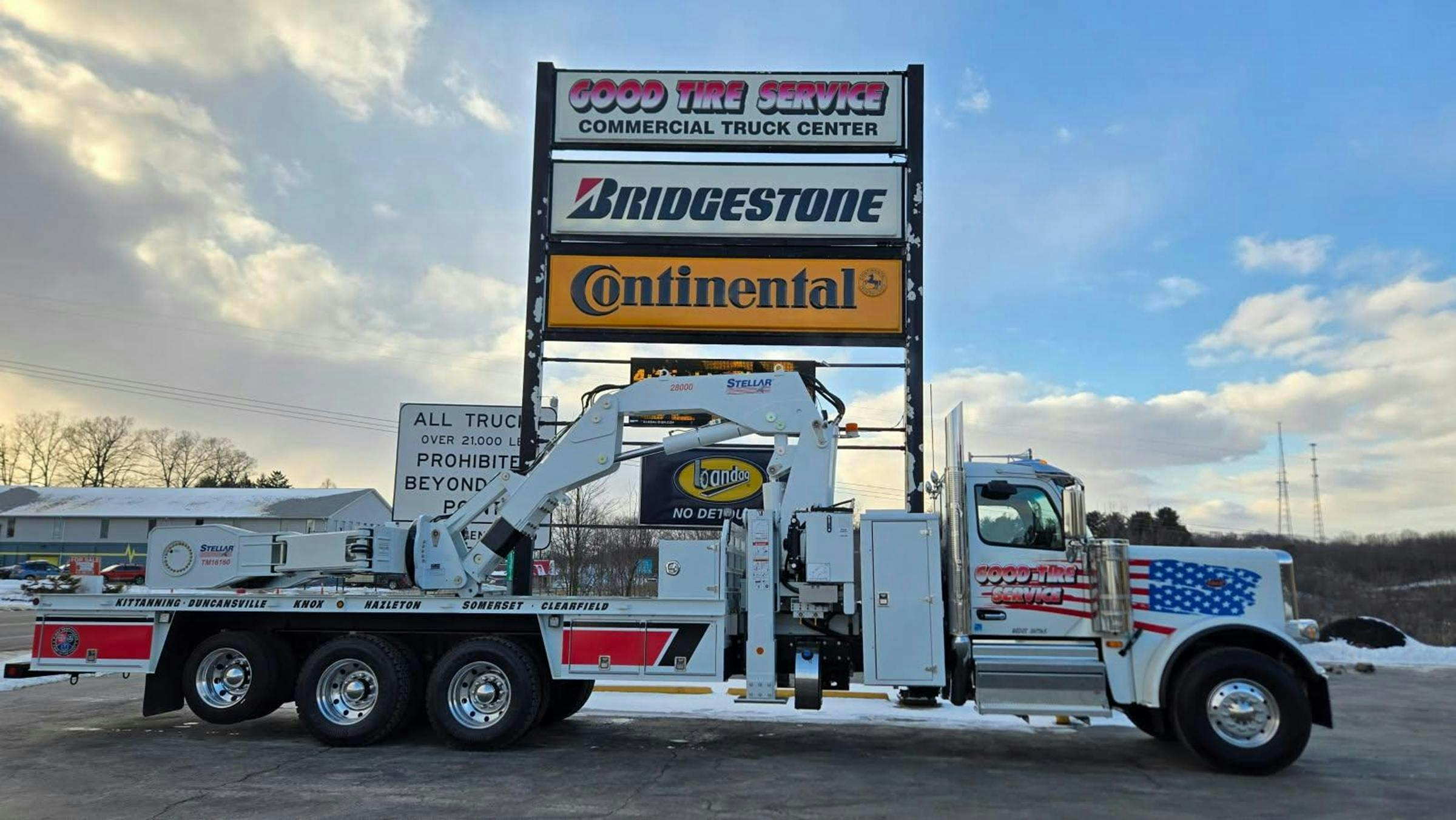Three Tire Dealers Share Operational Best Practices
Independent tire dealers are known for forging their own paths — and that includes how they run their businesses.
MTD spoke with three tire dealers to uncover the operational strategies behind their success. It’s probably no surprise that valuing and investing in their people has paid off well for these tire dealers. And another found that a $10 tool made a big difference in processing customers at the front counter and selling brake service.
Their findings just may help you, too.
A recruitment and retention solution
At VIP Tires & Service, which is based in Auburn, Maine, the highest turnover was among the tire dealership’s greenest employees: entry-level technicians.
Rob Kaffel, director of store operations, says, “If we couldn’t convert them in the first six to 12 months to our flat rate technician, where they would make more money, we saw a lot of them go.”
Some left for new car dealerships.
Others left the automotive industry altogether. “Back then, you could work at Walmart or McDonald’s and make the same amount of money.”
VIP was looking at all kinds of ways to stop that churn. Kaffel says, “We kept increasing compensation and that fixed the turnover a little bit, but still there was a missing piece.”
Conversations with the tire dealership’s employees revealed a recurring theme — that it was difficult for new technicians to invest in their initial toolbox. Some of the tire dealership’s senior technicians suggested VIP provide a tool reimbursement program.
VIP did create that option, but Kaffel also pitched an idea where VIP provides a toolbox and about $2,000 worth of tools to every entry-level technician. Those technicians sign a contract when they join the company and after they complete a year of employment, the tools and toolbox are theirs to keep.
Kaffel says most new technicians choose the toolbox option, though there’s an alternative where technicians can buy their choice of tools and have $1,500 worth of tools reimbursed. “Ninety-five percent of our people take the toolbox program because they want a new toolbox, they want the tools and (the value is) $500 more.”
The tool program has been in place for a couple of years and Kaffel says, “Our turnover for that entry-level position has changed tremendously and we’re retaining those guys. We’re converting more of those flat-rate technicians, which is the next step up.
“It’s really helped our business, not to mention recruiting. When you can sit down with an entry-level guy and let him know, ‘VIP’s gonna invest a couple thousand bucks into you the minute you walk in the door,’ people commit to come work for us.”
Kaffel says he’s aware of one competing business that provides a $500 reimbursement if the technician buys a certain amount in tools during the year, but he’s not aware of anyone else in VIP’s New England market offering a comparable toolbox program.
VIP commits to having the toolbox in the technician’s hands within the new employee’s first 30 days. Kaffel says sometimes VIP has a full toolbox ready and waiting for the next tech who walks in the door, but it’s more common that the business assembles the kit with its partners — GearWrench and Milwaukee Tools — when a new technician is hired.
Kaffel says VIP has spent about $400,000 on the program since its inception. At the outset, VIP provided toolboxes to all of its existing technicians, so the first-year cost was higher than normal. Kaffel says the company now spends about $100,000 a year on the program.
Valuing employees and suppliers
Charlie Clifford, sales manager for Good Tire Service Inc., based in Kittanning, Pa., says his company’s operational practices focus on two main things: talent acquisition and retention.
“Kevin (Good, vice president of the tire dealership) and I both grew up in the tire business, so for us, finding quality employees wasn’t as much of a problem 10 years ago as it is now,” explains Clifford.
He attributes this to attrition — or “guys retiring or getting out of the tire business. There’s just not the same kind of pool of talent out there that there once was.”
Clifford says minimum wage increases have made it hard to “find a person that is going to work on commercial tires on the side of the road.”
Good Tire Service has two commercial locations, one retail store and six combination locations.
The dealership focuses on retaining employees and according to Clifford, the company has made an impact in that area.
“I believe this is because we are very flat. Our organizational structure is flat. We don’t have this large hierarchy where guys have to talk to 13 different people and go through a chain of command to achieve something.”
Clifford says Good Tire’s ownership and leadership team are “very approachable. Even our tire technicians and our shop employees interact with our owners on a daily basis.”
Clifford says this makes Good Tire Service stand out to other potential employees. “Being a family-run commercial business of good size, we’re still very, very flat when it comes to operational awareness and interacting with employees and that is attractive to people,” he notes.
Kevin Good, vice president of Good Tire Service, says the company still does many things “like how it was back in the old days.
“Not that we are stuck in the old ways, but we still believe in a good handshake and we are backed by Christian faith, so I treat my guys the way I want to be treated and that kind of stuff. It really goes a long way.”
“It’s like the golden rule of management,” adds Clifford.
“It’s applying the same values from your home life to your work life,” says Good. “That’s been the hallmark of success for the company.”
Clifford also highlights the fact that employees see the dealership’s leadership team all the time and “every one of our employees knows exactly what Denton (Good, the owner of Good Tire) and Kevin look like.”
Clifford says he knows from experience that those values can attract employees to Good Tire Service, because that’s what happened to him. He previously worked for a tire manufacturer and Good Tire Service was his customer.
He says he came to work for Good Tire Service because he “appreciated the value and the foundation they established.”
Good says the commercial tire market looks different today than it did 20 years ago, when there were significantly more commercial tire dealerships.
Through mergers and acquisitions and attrition, the number of commercial dealerships has shrunk and “the handful of the large commercial tire dealers have just gotten larger.”
This has made employee recruitment and retention even more competitive.
“We value (our employees), we bonus them on their production and we pay them very, very competitively.
We are very strong on retaining quality employees, training them up and then retraining them over time to where we have, in our opinion, the strongest sales force in the business.”
Another operational practice that Good Tire Service follows is keeping its inventory supply and internal systems simple. “By that, I mean (that) we align as a tire dealership with very few new tire manufacturers on the commercial side,” says Clifford.
“We have four or five brands that we buy deep and go long to maintain a strong relationship and get the best pricing from a handful of (suppliers).
“What some dealers can face is the challenge of buying many brands and not getting the best pricing or best service.
“So we aligned with a few of them to get the most aggressive pricing strategy, so we’re not overrun by carrying too many brands.”
He tells his employees that anybody can sell a tire.
To retain customers over the longterm, it comes down to who can provide the best service and supply clients with what fits their needs best.
Clifford adds that Good Tire Service is selective about what tires it stocks.
“Some of our competitors stock and lead with a lot of what I would call the tier-four offerings and tires that are really subject to these incredible tariffs that could be coming out,” he explains.
“What we’ve done — and the practice we’ve employed — is we try to lead with these brands that support us and we upsell to domestically produced tires to drive the most value back to our end user fleets.”
Clifford says Good Tire Service aims to provide customers with tires that offer “the best return on investment, the longest life and the most retreadable casings, so we can lower their total cost of ownership.”
“And that is the value of doing business with our family. We want to try to take (the customer’s) operational cost and reduce it over time, rather than race to the lowest acquisition cost, which isn’t necessarily the best way to go to market.”
Getting the details right
At Joe’s Tire LLC, Ryan Eicher and his team have identified a recurring problem.
A customer would call his store in Barnesville, Ohio, and say his vehicle needed new brakes. An appointment was made, parts were ordered and on the appointed day, the vehicle would roll into a service bay. Then the technician would look at the brakes and find that the pads were 6 mm thick.
“You can’t conscientiously just replace brakes at 6 mm,” says Eicher, a 19-year Joe’s Tire veteran who is both a manager and a partner in the business.
So the service advisor informs the customer he doesn’t need brakes yet after all.
The problem for Joe’s Tire is that “I have an hour on my schedule that is lost,” he explains.
The tire dealership has created a new process.
If a customer calls about needing new brakes, the service advisor asks that customer to stop by for a quick inspection. Joe’s Tire purchased $10 pencil-style brake pad gauges.
The gauges can be used between the spokes on a good number of vehicles — but not all, Eicher concedes. Still, it’s a quick way to measure brake pad thickness without removing the tire.
“If somebody’s asking about brakes, we’ll have them stop by,” he says. “We’re in a small town, so we’ll check (the brakes) ahead of time and maybe take a five-minute test drive to see if it’s making noise. Then that gives us an idea of what it needs.”
This small step then ensures that Joe’s Tire has the correct parts on hand or on order. And Eicher says the customer has “some skin in the game at that point to where they’re more likely to show up for their appointment.”
Before the dealership’s service advisors were armed with these brake pad gauges six-plus months ago, Eicher says it felt like his store was losing too much time on unnecessary brake inspections.
“We were doing enough brake checks and pulling off the wheel and running into so much time on it that I was like, ‘We’ve gotta do something different on this.’”
The gauges are also helping to solve the mystery when a customer isn’t sure if a front or rear brake is squeaking.
But the biggest saving is in fully utilizing service bays, says Eicher.
“It’s really cut down (on) the amount of times we schedule something for brakes (and) it doesn’t actually need the brakes.”
About the Author
Madison Hartline
Associate Editor
Madison Hartline (Gehring) is the associate editor for Modern Tire Dealer and Motor Age. Since joining MTD after graduating from The Ohio State University in 2022, she has taken on the role of managing the brand’s social media strategy, producing podcast episodes and overseeing eNewsletter content.
Don't miss Hartline's next article. Sign up for MTD's newsletter.
Joy Kopcha
Managing Editor
Joy Kopcha joined Modern Tire Dealer and Auto Service Professional as senior editor in 2014 after working as a newspaper reporter for a dozen years in Kansas, Indiana and Pennsylvania. She was named managing editor of MTD and ASP in 2022, and took on that same role with Motor Age in 2024.
She is an award-winning journalist, including in 2023 when she was named a Jesse H. Neal Awards Finalist.
Don't miss any of her articles. Sign up for MTD's newsletters.




